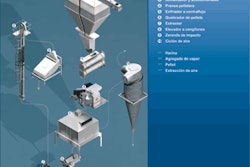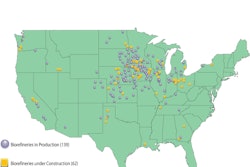Concerned over a Salmonella Enteritidis incidence rate of 18/100,000 population, an intensive program of inspection and compliance of all flocks over 350 hens will be initiated. The approved laboratories will be responsible for testing flocks for the presence of S.Enteritidis, S.typhimurium, S.Hadar and S.Infantis. Samples will be obtained from flocks at day-old, prior to transfer, at 22-26 weeks and at 25 week intervals thereafter. Samples will comprise pooled cloacal swabs, dust and swabs attached to boots (analogous to USA litter drag swabs). Farms confirmed to be salmonella positive will be required to divert eggs to in-shell pasteurization or breaking and pasteurization.
The standard for suppression of designated Salmonella spp. will be a 10 percent year over year reduction in flock prevalence rates with 8% as the starting point for U.K. flocks. Approximately 85 percent of U.K. producers have for a number of years complied with the British Egg Industry Council “Lion Quality Scheme” for SE, which is roughly similar to the USA UEP “5-Star Program”. The problem lies in the small free-range and non-confined flocks in which conventional biosecurity measures are ineffective. Administration of a range of live attenuated and inactivated vaccines and competitive cultures are followed as accepted practices and producers are also adding organic acids and mannanoligosaccharides to feed as preventive measures. The Salmonella status of ingredients and mixed feeds is also subjected to frequent monitoring by regulatory officials.




.jpg?auto=format%2Ccompress&fit=crop&h=167&q=70&w=250)












